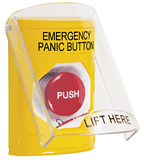Here Comes the Rain Again
Jan. 31st, 2025 10:33 pmIt actually rained a bit today. On that one hand it's odd to say actually because we're in the middle of what's supposed to be our rainy season here in California. On the other hand, it's been a ridiculously dry January. The tenth of an inch, a drizzle really, we got locally may be the first precipitation we've had all month.
We're in a La Niña weather pattern this winter. That means drier than average weather south of us and wetter than average to the north. What about here? We're kind of on the dividing line where it can shift either way. After a decent cumulative rainfall in November and December that had us about at average for the season to date we've now dropped to about half the normal-to-date average here in Central (yes, Central) California.
The northern third of the state is at average-plus, which is great for filling major reservoirs such as Shasta and Oroville, but Southern California is at a quarter or less of normal rainfall so far. You see one of the consequences of that dryness in the terrible fires that have burned in and around Los Angeles. Another consequence we might see in a few months is drought.
Meanwhile we're swinging back to wetter weather here in the SF Bay area. After the bit of rain today we'll have more tomorrow, then there's rain in the forecast on and off through the following weekend. It's kind of a bummer that I missed January's clear weather while staying inside the past few weeks. My mood was dreary even as the weather was not. Now the weather turns to dreary just as I'm hoping to snap out of it. Well, we need the rain. I'll take solace in that.
We're in a La Niña weather pattern this winter. That means drier than average weather south of us and wetter than average to the north. What about here? We're kind of on the dividing line where it can shift either way. After a decent cumulative rainfall in November and December that had us about at average for the season to date we've now dropped to about half the normal-to-date average here in Central (yes, Central) California.
The northern third of the state is at average-plus, which is great for filling major reservoirs such as Shasta and Oroville, but Southern California is at a quarter or less of normal rainfall so far. You see one of the consequences of that dryness in the terrible fires that have burned in and around Los Angeles. Another consequence we might see in a few months is drought.
Meanwhile we're swinging back to wetter weather here in the SF Bay area. After the bit of rain today we'll have more tomorrow, then there's rain in the forecast on and off through the following weekend. It's kind of a bummer that I missed January's clear weather while staying inside the past few weeks. My mood was dreary even as the weather was not. Now the weather turns to dreary just as I'm hoping to snap out of it. Well, we need the rain. I'll take solace in that.













